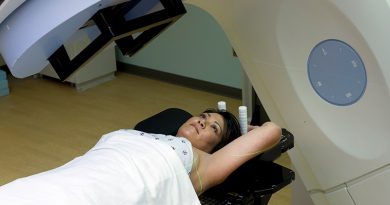Most cellulite and stretch mark creams are promising to deliver the impossible. Here’s what to use instead, according to a dermatologist.
- Cellulite and stretch mark creams often promise to reduce or remove the appearance of these skin conditions, but a dermatologist said the majority of these products can't do that.
- Caffeine and retinol are the only two topical ingredients scientifically proven to reduce cellulite and stretch marks.
- Non-surgical procedures like microdermabrasion and Velashape could also help.
- Visit Insider's homepage for more stories.
Stretch marks and cellulite, two skin conditions that are the result of body changes, are often considered undesirable so it's no surprise there's an entire class of topical creams dedicated to removing the marks from a person's body.
But the majority of these products, which are marketed as cures for cellulite and stretch marks, promise to "deliver the impossible," according to Dr. Stacy Chimento, a board-certified dermatologist at Riverchase Dermatology in Miami Beach, Florida.
That's because both cellulite and stretch marks are mainly the result of genetics, and the formation of these marks happens under the skin, making topical solutions, for the most part, ineffective.
Cellulite occurs when a person's body fat and their connective tissue, which has fibers that hold fat in place, become entangled below the skin and create a dimpled appearance in the skin's surface, Insider previously reported.
And stretch marks are the result of the skin stretching during puberty, pregnancy, or weight gain. According to Chimento, when body growth due to these events happens quickly, the inner layer of the skin rips, and "the layers beneath it will fill in the cracks, causing the marks to appear."
Chimento told Insider there are a few scientifically-proven exceptions to the ineffective swath of products, like those that contain retinol and caffeine. She also said certain minimally invasive doctor's office procedures can reduce the appearance of these markings.
It's normal to have stretch marks and cellulite
For most people, stretch marks and cellulite are part of their genetic code and are, to an extent, unavoidable.
Between 80% and 90% of women have cellulite, according to the National Institutes of Health.
"Cellulite formations start in women during puberty as a result of hormonal changes. Commonly women over age 18 have already experienced some degree of cellulite," Chimento said, adding that a person doesn't have to be overweight to develop cellulite in the first place.
A person's metabolism, circulation, and fat distribution, all genetic factors, have also been shown to predispose a person to cellulite.
Similarly, stretch marks can be the result of genetics.
"If your mother or grandmother had tissue scars, you are more likely to get them as well," Chimento said. She also said most pregnant women will develop stretch marks by their third trimester.
Diet, exercise, and smoking habits could contribute
Lifestyle factors can also increase a person's chances of developing cellulite or stretch marks, Chimento said.
She said people who eat too much salt and carbohydrates and not enough fiber are more likely to develop cellulite because these types of diets can lead to bloating, which makes the skin dimples more prominent.
Smokers and inactive people are also more likely to develop cellulite, according to Chimento.
When it comes to stretch marks, "being overweight or obese can lead to higher odds of developing stretch marks," Chimento said. Rapid weight gain, and even rapid weight loss, could cause stretch marks because the skin is being stretched quickly from underneath, and therefore rips.
To reduce cellulite and stretch marks, look for creams with retinol or caffeine
According to Chimento, there are two topical skincare ingredients that have been scientifically proven to reduce cellulite: retinol and caffeine.
Retinol, a pure and potent form of vitamin A, can strengthen and thicken the skin to reduce skin dimples, according to Chimento.
"Research shows that applying topical 0.3% retinol for at least six months can aid in improving the appearance of cellulite," she said.
And caffeine, an antioxidant, can reduce swelling and tighten cellulite-containing skin when used daily, according to research.
You can also apply a daily moisturizer to prevent stretch marks during pregnancy, "but there are no studies to show that any creams can help prevent stretch marks," Chimento said.
Minimally invasive procedures are also an option
And the FDA recently approved a first-of-its-kind treatment for cellulite called Qwo, Insider previously reported. The injectable, which will be available in spring 2021, is injected into a patient's butt cheeks up to 12 times and over three sessions to dissolve connective-tissue fibers that cause cellulite.
For stretch marks, microdermabrasion, where a dermatologist gently sands away the skin's top layer, chemical peels, and laser therapy can reduce their appearance, Chimento said.
Another option is Velashape, a procedure that involves gliding a special lotion over the skin using an infrared device. Doing so can promote skin elasticity, according to Chimento, which makes the skin less susceptible to stretches and tears.
"The infrared light discharges heat to target fat cells, which helps increase their metabolism and leads to smoother skin and an overall reduction in the appearance of fat and cellulite in the treatment area," she said.
Lastly, you should never tan in an attempt to reduce stretch marks, Chimento said, because doing so can make them look more pronounced.
"Stretch marks are comprised of scar tissue that does not respond to tanning. The result is that as the areas surrounding the scars darken, the stretch marks themselves become bolder," she said.
Source: Read Full Article



